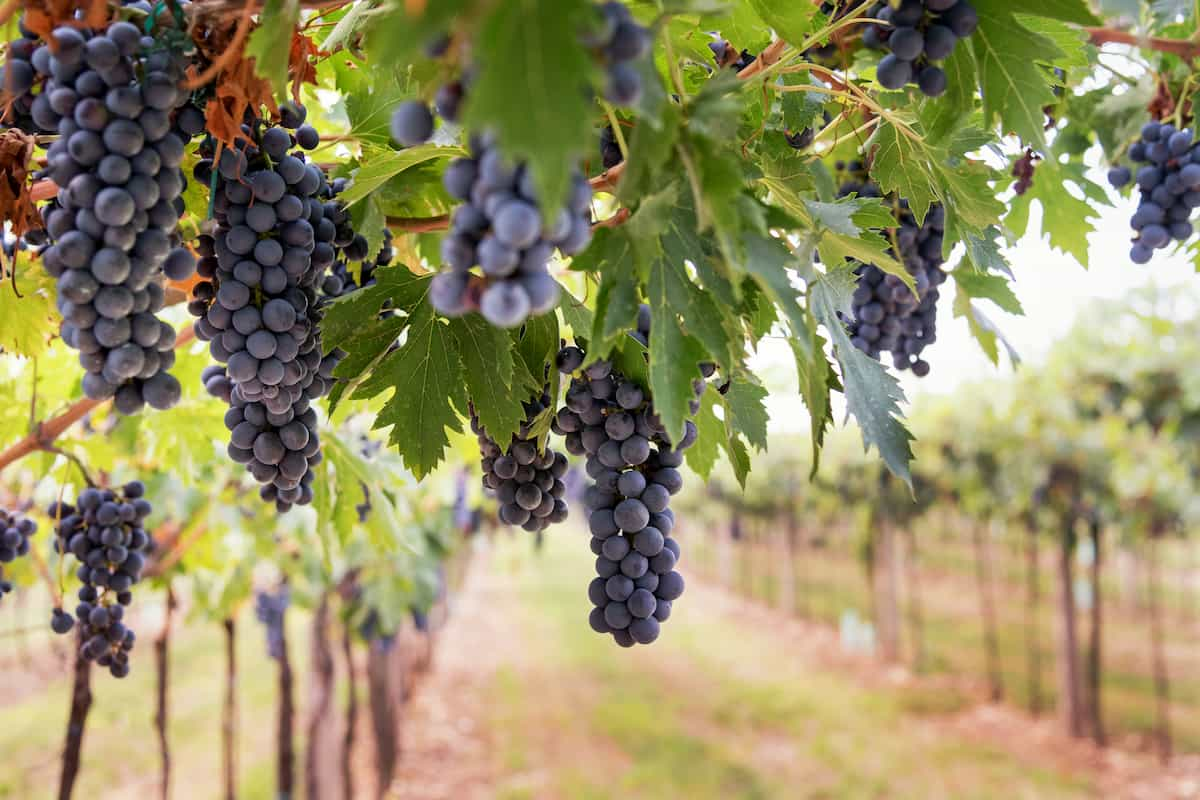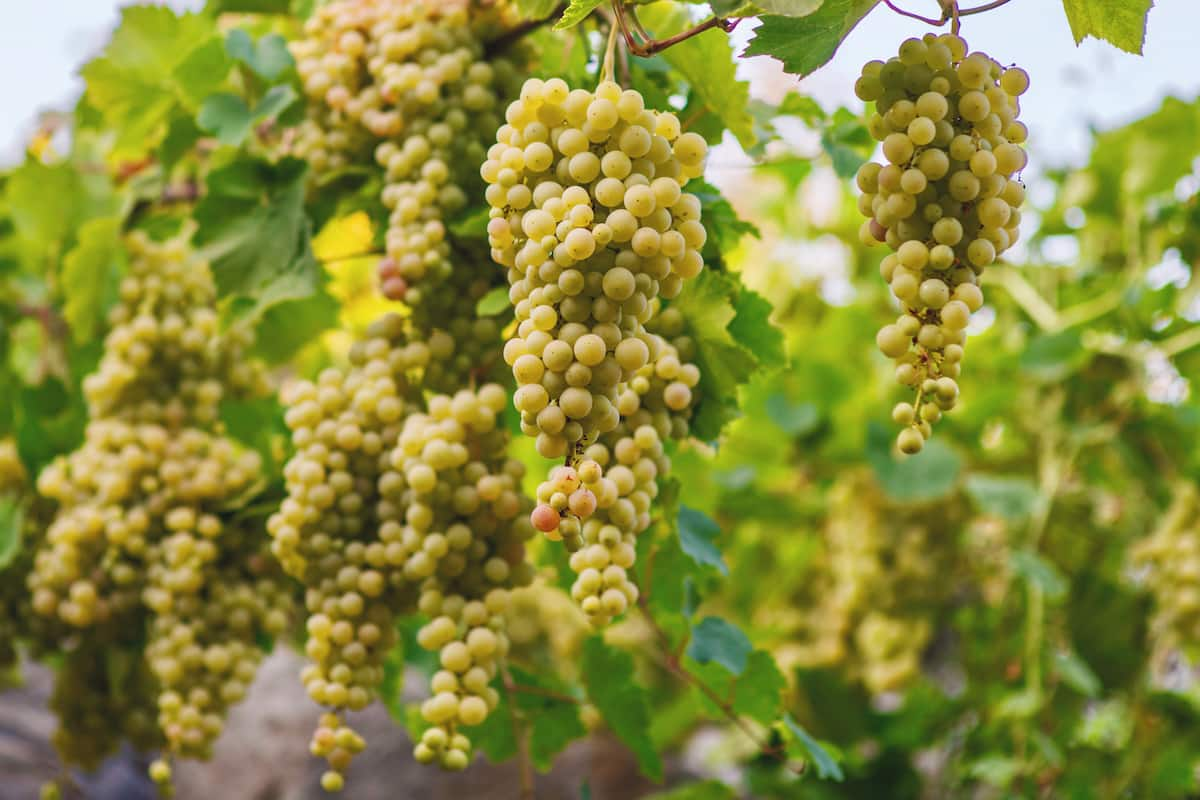Grape production faces challenges due to the low yield of female flowers necessary for fruit production. As a dioecious species, grapevines produce more male flowers than female, resulting in reduced yields. This issue is especially problematic for seedless grape varieties, as seeds reduce market value.

Increasing female flower production is crucial for improving grape production quality and yield. Hormone treatments, pruning techniques, and genetic modification are some strategies being explored by researchers and growers to enhance female flower production in grapes, which enhances the yield at last with more flowers.
How to Increase Female Flowers in Grapes
Introduction to Grapes Cultivation
Grape cultivation has a long and rich history that dates back thousands of years. Grapes are among the most widely cultivated fruit crops worldwide due to their economic value and versatility. They are grown for various purposes, including wine, juice, raisins, and table grapes. Successful grape cultivation requires specific growing conditions, including well-drained soil, adequate sunlight, and moderate temperatures.
Depending on the intended use of the grapes, different cultivation practices may be necessary, such as careful management of the grapevine’s growth and fruit production for high-quality wine production. However, grape cultivation faces numerous challenges, including disease and pest management, climate change, and competition from other crops. Despite these challenges, the grape cultivation industry remains vital and promising, with continued technological advancements and sustainable practices.
Understand the Anatomy of Grapes Flowers
Grapevines usually produce one to three flower clusters per shoot, depending on the variety, with clusters developing opposite the leaves at the third to sixth nodes from the base. A cluster can contain several to hundreds of individual flowers, each having a single pistil and five stamens.
The conical pistil has a broad base that constitutes the ovary containing two compartments, each having two ovules with a single egg. The anthers produce numerous yellow pollen grains containing sperm. Most commercial grapevine varieties have perfect flowers, having both male and female components. Depending on weather conditions, Bloom typically lasts 1 to 3 weeks, 50 to 80 days after budburst.
Best Variety of Cultivation Grapes
There are numerous varieties of grapes cultivated worldwide, each with unique characteristics and uses. Some of the most popular grape varieties for cultivation include Cabernet Sauvignon, Chardonnay, Pinot Noir, Merlot, Sauvignon Blanc, Syrah, Riesling, Tempranillo, Malbec, Zinfandel, Grenache, Sangiovese, Chenin Blanc, Muscat, Semillon, Viognier, Gewürztraminer, Barbera, Nebbiolo, and Albariño.this varieties may gives different yields in different field conditions.
In case you missed it: How to Increase Female Flowers in Kiwi: Explained in 10 Steps for High Yields and Profit

Optimal Growing Conditions for Grapes
- Climate: Grapes thrive in areas with warm, dry summers and cool winters. A Mediterranean climate with mild winters and long, dry growing seasons is ideal.
- Soil: Grapevines prefer well-drained soils with a pH range of 6.0-7.0. The soil should be deep, with good water-holding capacity and nutrient availability.
- Sunlight: Grapes need plenty of sunlight to ripen their fruit properly. Vines should be planted in areas with full sun exposure.
- Water: Grapevines require moderate water, with consistent irrigation during the growing season. Over-irrigation can lead to disease and low fruit quality.
- Fertilization: Proper nutrient management is essential for healthy grapevine growth and fruit production. Soil and leaf analysis can help determine the optimal fertilization program.
- Pruning: Correct techniques are essential for maintaining vine balance, controlling yield, and promoting fruit quality.
Grapes Flowering stage
Grapevines begin to flower 40-80 days after bud break, with small clusters appearing on the tips of the young shoots. Flowering occurs when temperatures range between 15-20 °C (59-68 °F), typically in May for the Northern Hemisphere and November for the Southern Hemisphere. During this stage, pollination and fertilization occur, producing grape berries containing 1-4 seeds. Most cultivated grape vines are hermaphroditic, possessing both male stamens and female ovaries, allowing for self-pollination.
The initial visible part of the flower is the calyptra, a fused cap of petals, which sheds to liberate the pollen from the anthers of the stamen. Pollination is mainly self-contained within the vine, with wind and insects playing a minor role. Cross-pollination between different grapevine varieties is possible, resulting in new grape varieties. Detrimental weather conditions can severely affect flowering, resulting in unfertilized flowers and reduced yields. As the flowering process ends, buds for next year’s crop begin to form.
Factors that Affect Less Female Flowers in Grapes
Several factors can affect the development of female flowers in grapes. One major factor is temperature, with higher temperatures during the flowering period leading to a decrease in the proportion of female flowers. Other factors include:
- Water stress: Grapevines that experience water stress during flowering may produce fewer female flowers.
- Nutrient deficiencies: A lack of nutrients such as potassium and boron can also affect the development of female flowers.
- Pruning practices: Over-pruning or improper techniques can reduce the number of female flowers.
- Disease and pest pressure: Damage from diseases and pests can reduce the number of female flowers.
- Genetics: Some grape varieties are naturally predisposed to producing fewer female flowers.
10 Simple Tips to Increase Female Flowers in Grapes
- Plant female grapevine varieties like ‘Chardonnay’ or ‘Thompson Seedless.
- Increase the potassium level in the soil, as potassium plays a role in the development of female flowers.
- Provide sufficient irrigation, as drought stress can reduce the number of female flowers.
- Use balanced fertilizers, as imbalanced nutrients can negatively impact flower development.
- Practice proper pruning, as excessive pruning can reduce the number of flower clusters.
- Manage pests and diseases to prevent damage to developing flowers.
- Control temperature and light exposure by providing shade or removing excess leaves.
- Implement cover crops or mulch to improve soil health and promote better nutrient uptake.
- Use plant growth regulators to stimulate female flower development.
- Practice good vineyard management practices, such as regular monitoring and soil testing, to maintain healthy vineyard conditions.
In case you missed it: How to Increase Female Flowers in Apple: Explained in 10 Steps for High Yields and Profit

Conclusion
To improve grape yields and fruit quality, grape growers can increase the number of female flowers through simple steps such as pruning, fertilizing, and pest management. Weather and grape variety can also influence the development of female flowers. Implementing these tips can help ensure a successful harvest and produce high-quality grapes for winemaking or consumption.
- Feed Your Flock for Less: Top 10 Tips to Save on Chicken Feed
- Ultimate Guide to Ossabaw Island Hog: Breeding, Raising, Diet, and Care
- Hatching Answers: The Top 10 Reasons Your Chickens Aren’t Laying Eggs
- Eggs and Economics: Breaking Down the Cost of Raising Backyard Chickens
- Defend Your Greens: Proven Methods to Keep Iguanas Out of Your Garden
- Ultimate Guide to Cinnamon Queen Chicken: A Comprehensive Guide for Beginners
- Ultimate Guide to California Tan Chicken: Breeding, Raising, Diet, Egg-Production and Care
- Ultimate Guide to Marsh Daisy Chicken: Breeding, Raising, Diet, and Care
- 10 Types of Chicken Farming Businesses You Can Start for Profits